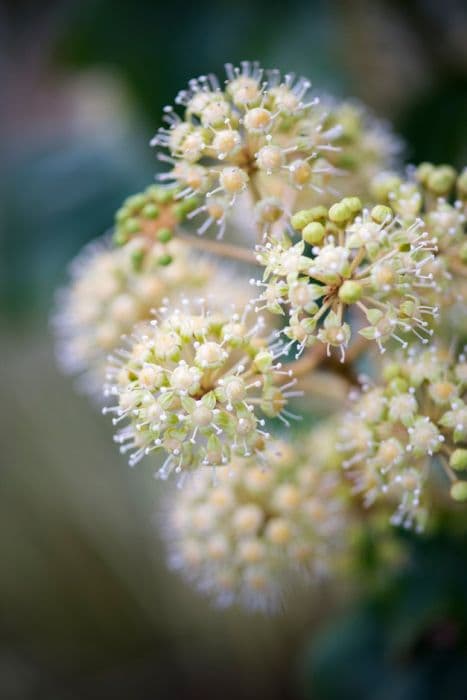Lancewood Pseudopanax crassifolius

ABOUT
The plant commonly known as lancewood has a quite distinctive appearance characterized by its tough and leathery leaves. When young, the leaves are long, narrow, and a dark brownish-green color, often taking on a slightly drooping aspect. They have a distinctive midrib that is lighter than the rest of the leaf. As the plant matures, the foliage changes dramatically, with leaves becoming larger, more rounded, and a brighter green color. The leaf edges are often wavy or slightly toothed. The plant generally produces a single central stem, which may be straight or somewhat winding, with the foliage arranged in a spiral formation along its length. When it flowers, the lancewood bears small, inconspicuous clusters of flowers. These blooms may later give way to small dark fruit that contrast with the foliage. The overall appearance of the lancewood is one of stiffness and density, giving it a very robust and unique silhouette in its native habitat.
About this plant
 Names
NamesFamily
Araliaceae
Synonyms
Horoeka, Lancewood
Common names
Pseudopanax ferox, Nothopanax crassifolius, Neopanax crassifolius, Panax crassifolius, Raukaua crassifolius.
 Toxicity
ToxicityTo humans
The Pseudopanax crassifolius, commonly known as lancewood, is not widely regarded as a toxic plant to humans. However, as with any plant, individual reactions can vary, and it is generally advised not to ingest parts of ornamental plants due to potential unknown toxicities or individual allergies.
To pets
Lancewood (Pseudopanax crassifolius) is similarly not widely recognized as a toxic plant to pets. However, it is important for pet owners to prevent pets from eating plants as a general precaution, and to be aware that even non-toxic plants can cause gastrointestinal upset if ingested in significant quantities. If a pet does consume lancewood and exhibits any unusual symptoms, it is recommended to consult a veterinarian.
 Characteristics
CharacteristicsLife cycle
Perennials
Foliage type
Evergreen
Color of leaves
Green
Height
10 feet (3 meters)
Spread
6 feet (1.8 meters)
Plant type
Shrub
Hardiness zones
8
Native area
New Zealand
Benefits
 General Benefits
General Benefits- Ornamental Value: Pseudopanax crassifolius, commonly known as lancewood, offers aesthetic value to gardens with its unique lance-shaped foliage and architectural structure.
- Native Habitat Support: Being native to New Zealand, it supports local biodiversity by providing a habitat for native wildlife such as birds and insects.
- Drought Tolerance: Lancewood is known for its ability to withstand dry conditions, making it suitable for drought-prone areas.
- Low Maintenance: This plant is generally low maintenance, requiring minimal care once established, which makes it a good choice for those who want an attractive garden without a lot of work.
- Erosion Control: The root system of lancewood can help to stabilize the soil, making it useful for planting in areas that are prone to erosion.
- Cultural Significance: Lancewood holds cultural importance for the Maori people of New Zealand and is often used in their traditional carvings and cultural practices.
 Medical Properties
Medical PropertiesThis plant is not used for medical purposes.
 Air-purifying Qualities
Air-purifying QualitiesThis plant is not specifically known for air purifying qualities.
 Other Uses
Other Uses- Pseudopanax crassifolius, also known as Lancewood, can be used as a shelter plant in reforestation projects due to its robustness and resilience in various soil types.
- The wood of Lancewood is suitable for making walking sticks and tool handles because it is strong and flexible when young.
- Lancewood has been used in landscape gardening to provide a striking architectural element due to its unique shape and foliage.
- The plant's distinctive juvenile form makes it an interesting subject for botanical studies and educational purposes in schools and universities.
- Due to its durability, Lancewood can be used to create garden stakes and supports for other plants.
- The mature leaves and branches may be employed in floral arrangements and artistic installations for their texture and form.
- Traditional Maori carvers sometimes use the wood of older Lancewood trees for crafting decorative items or parts of tools.
- The wood's ability to resist decay makes it a good candidate for outdoor art projects, including sculptures.
- Young Lancewood plants can act as a natural windbreak, especially in coastal areas prone to strong winds.
- Lancewood leaves can be used as a natural mulch or composting material to enrich garden soils.
Interesting Facts
 Feng Shui
Feng ShuiThe Lancewood is not used in Feng Shui practice.
 Zodiac Sign Compitability
Zodiac Sign CompitabilityThe Lancewood is not used in astrology practice.
 Plant Symbolism
Plant Symbolism- Resilience: The lancewood, or Pseudopanax crassifolius, with its tough, thick leaves and ability to thrive in various soil types, symbolizes resilience. It suggests an ability to weather challenging conditions and persevere through adversity.
- Growth: With its distinctive juvenile form that changes dramatically as it matures, the lancewood symbolizes growth and development. It represents the journey of transformation and the potential for change within individuals and life itself.
- Protection: The lancewood's tough foliage and its use in traditional Maori weaponry hint at symbolism related to protection and defense. It can represent safeguarding oneself or others and standing strong against threats.
- Adaptability: The lancewood showcases its adaptability by thriving in diverse environments. This aspect of the plant symbolizes flexibility and the ability to successfully navigate changing circumstances.
 Water
WaterLancewood should be watered when the top inch of soil feels dry to the touch. Generally, this means watering once every 1-2 weeks, but this can vary depending on environmental conditions and pot size. It’s best to use lukewarm water gently around the base of the plant until you see water running through the drainage holes, indicating the soil is thoroughly moistened. On average, this might require around 16-24 oz for a medium-sized pot, every time you water. Be cautious not to over-water, as Lancewood does not like soggy roots.
 Light
LightLancewood prefers bright, indirect sunlight. It should be placed in a well-lit room where it can receive plenty of light but should be protected from the harsh midday sun, which can scorch its leaves. An east or west-facing window covered with a sheer curtain is an ideal spot for this plant. If the leaves start to show signs of yellowing or burning, it may be receiving too much direct light.
 Temperature
TemperatureLancewood thrives in temperatures between 50°F and 75°F, which are typical indoor conditions. It can tolerate a minimum of 40°F for short periods, but frost or prolonged exposure to cold will damage the plant. The ideal range for growth is usually between 60°F and 70°F. Protect the Lancewood from drafts and sudden temperature changes to maintain its health.
 Pruning
PruningPrune the Lancewood to maintain its shape and encourage bushier growth. Best done in late winter or early spring before new growth starts, pruning can be performed as often as needed to remove dead or yellowing leaves and to control the plant's size. Cleaning out the center of the plant also improves air circulation, which is beneficial for the plant's health.
 Cleaning
CleaningAs needed
 Soil
SoilLancewood thrives in well-draining soil with high organic matter content. A mix of loam, peat moss, and perlite or pine bark can provide the appropriate structure and nutrients. The ideal soil pH for Lancewood is slightly acidic to neutral, around 6.0 to 7.0.
 Repotting
RepottingLancewood (Pseudopanax crassifolius) should be repotted every 2 to 3 years or when the plant has outgrown its current pot. Care should be taken to not disrupt the root system excessively during repotting.
 Humidity & Misting
Humidity & MistingLancewood prefers moderate to high humidity levels. Maintaining humidity levels around 50-70% is ideal for its health and growth, simulating its native forest environment.
 Suitable locations
Suitable locationsIndoor
Place Lancewood in bright, indirect light and high humidity.
Outdoor
Plant Lancewood in dappled shade with enriched, well-draining soil.
Hardiness zone
8-11 USDA
 Life cycle
Life cyclePseudopanax crassifolius commonly referred to as lancewood, begins its life cycle as a seed that germinates in a suitable environment, often in the understory of a forest. During its juvenile phase, which can last for several years, it exhibits narrow, lance-shaped leaves with jagged edges and a drooping form – an adaptation thought to deter browsing by the now-extinct moa. As the lancewood matures into its adult phase, the leaves gradually become wider, shorter, and more rounded, and the tree develops a more upright growth habit with a distinct trunk. The tree reaches reproductive maturity and begins to produce clusters of small greenish-white flowers, which are typically dioecious, meaning trees are either male or female. After pollination, typically by insects, fertile female trees produce small, black, non-fleshy fruits that contain seeds for dispersal, often facilitated by birds. The lancewood's lifespan can extend over several decades, during which time it can reach a height of up to 15 meters.
 Propogation
PropogationPropogation time
Spring-summer
The Pseudopanax crassifolius, commonly known as Lancewood or Horoeka, is a unique plant native to New Zealand that is typically propagated using seeds. Propagation by seeds is best performed in the fall to align with the plant's natural germination cycle. The seeds of Lancewood require stratification, which involves a period of cold treatment to break dormancy. The process involves sowing the seeds in a well-draining seed-raising mix and then placing them in a location with cool temperatures, around 40 degrees Fahrenheit (approximately 4 degrees Celsius), for about four to six weeks. After stratification, the seeds should be moved to a warmer environment where temperatures range from 65 to 75 degrees Fahrenheit (around 18 to 24 degrees Celsius) to encourage germination. This method reflects the natural seasonal changes the seeds would experience in their native habitat and can help improve germination rates.









